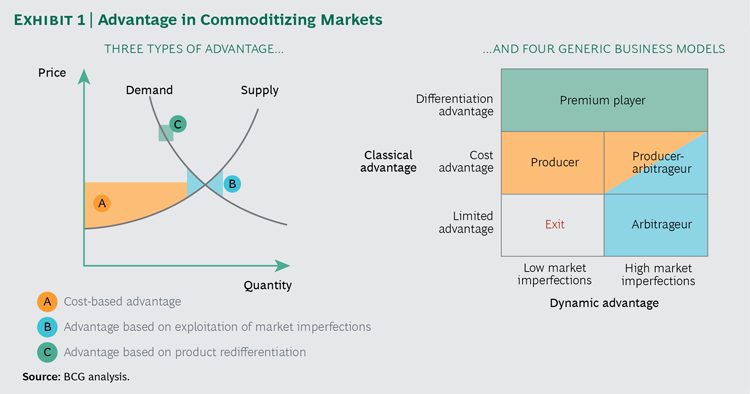China’s economic slowdown has led to overcapacity in many sectors and a significant fall in the prices of many commodities. Although many businesses will regard this as a short-term, cyclical challenge—one they can weather through capacity adjustments—it may prove for others to be something entirely different. It may mark the onset of commoditization, a secular and more severe challenge for which businesses may be wholly unprepared.
Commoditization is not necessarily a death sentence. (See “Escaping the Doghouse: Winning in Commoditized Markets,” BCG Perspectives, April 2015.) But surviving it, or even benefiting from it, can entail drastic measures, such as rethinking strategy, repositioning the company in the industry’s value chain, and overhauling its operating model. Many businesses facing commoditization fail to respond with anywhere near the required boldness or speed, however. Indeed, some may not even recognize or acknowledge the challenge, let alone succeed at crafting an effective plan to address it.
Understanding Advantage in Commoditizing Markets
Eventually, all products become commoditized. (See “BCG Classics Revisited: The Growth Share Matrix,” BCG Perspectives, June 2014, and “Adaptability: The New Competitive Advantage,” BCG article, August 2011.) A company’s optimal strategic response will depend not only on the industry’s current state but also on its likely evolution. In attempting to gauge the latter, a company must try to determine whether it can establish a sustainable position on the basis of any one of three factors: its cost position; whether, and to what extent, there are imperfections in the market that it can exploit; and its ability to redifferentiate its product. (See Exhibit 1.)



